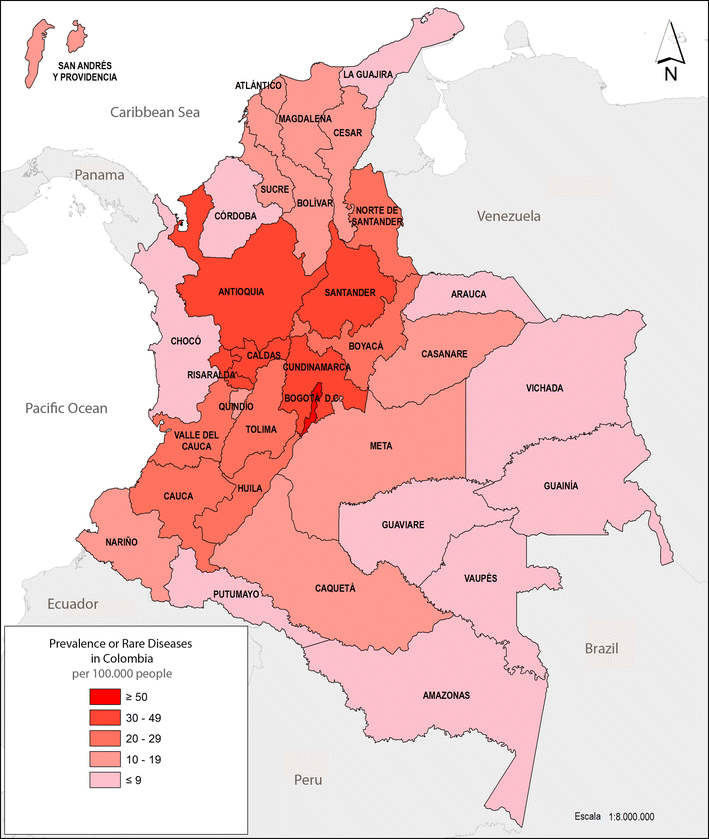A first description of the Colombian national registry for rare diseases
- PMID: 29073918
- PMCID: PMC5659024
- DOI: 10.1186/s13104-017-2840-1
A first description of the Colombian national registry for rare diseases
Abstract
Objective: Orphan diseases must be considered a public health concern, underlying country-specific challenges for their accurate and opportune diagnosis, classification and management. Orphan disease registries have not yet been created in South America, a continent having a population of ~ 415 million inhabitants. In Colombia ~ 3 million of patients are affected by rare diseases. The aim of the present study was to establish the first Colombian national registry for rare diseases. The registry was created after the establishment of laws promoting the development of clinical guidelines for diagnosis, management, census and registry of patients suffering rare diseases.
Results: In total, 13,215 patients were recorded in the Colombian registry. The survey reported 653 rare diseases. The most common diseases were congenital factor VIII deficiency (hemophilia A) (8.5%), myasthenia gravis (6.4%), von Willebrand disease (5.9%), short stature due to growth hormone qualitative anomaly (4.2%), bronchopulmonary dysplasia (3.9%) and cystic fibrosis (3.2%). Although, a marked under-reporting of cases was observed, some pathologies displayed similar behavior to that reported by other initiatives and databases. The data currently available in the registry provides a baseline for improvement regarding local and regional surveys and the start for better understanding rare diseases in Colombia.
Keywords: Colombian health system; Orphan disease; Rare disease registry.
Figures
References
-
- Taruscio D, Capozzoli F, Frank C. Rare diseases and orphan drugs. Ann dell’Istituto Super di sanità. 2011;47:83–93. - PubMed
MeSH terms
LinkOut - more resources
Full Text Sources
Other Literature Sources
Medical


